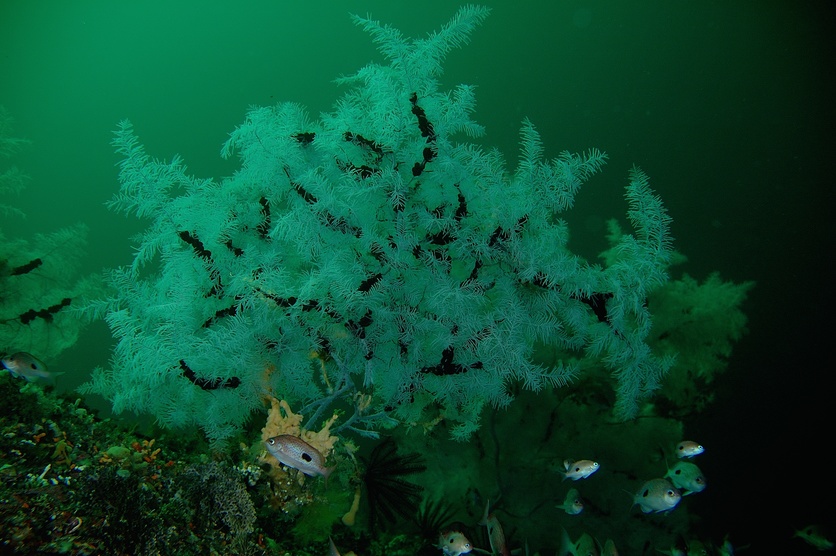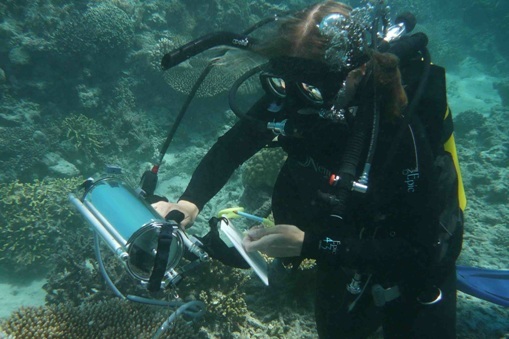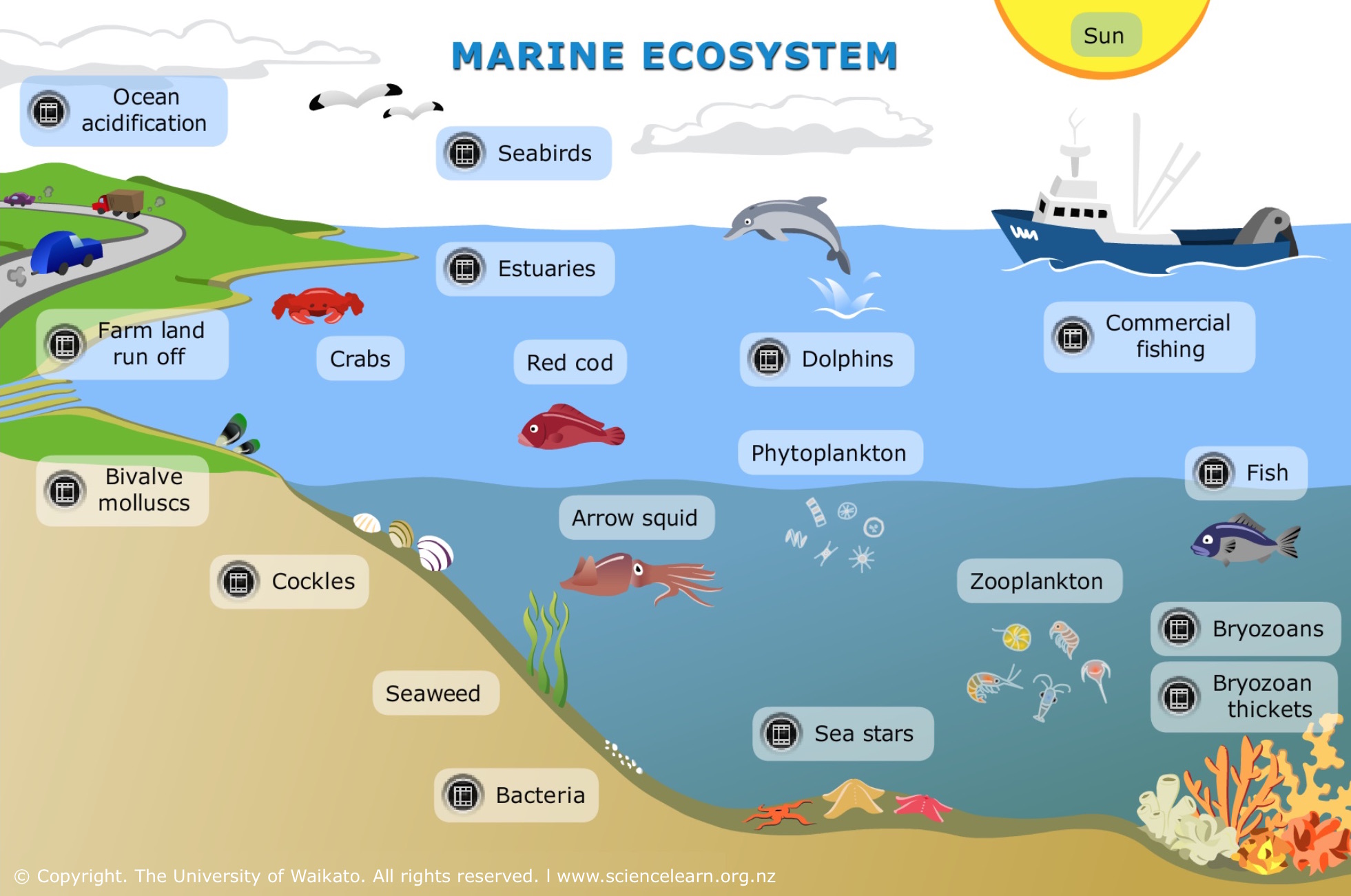New Zealand is surrounded by the sea, and scientists estimate that as much as 80% of our known species are found in the seas around New Zealand. This marine environment not only provides a habitat for an estimated 65,000 species – it’s an important source of food and provides recreational and economic opportunities for our communities. Although we might think of the marine environment as separate from land, the two ecosystems are intricately linked – we are part of the marine food web whether we live on the coast or not.
Let’s explore…
Let's go on a journey into the sea. Take a closer look at some of the organisms that live there and how they are classified. For example, we explore the extraordinary adaptations of sea stars, the importance of cockles and how to tell if a bryozoan is a plant or an animal.
Find out more about where these marine organisms live as we discover some of New Zealand’s unique marine environments including estuaries, fiords and the continental shelf. Living in these habitats is often challenging, and marine organisms have evolved many weird and wonderful adaptations to cope with the variable environmental conditions in the sea.
Meet our scientists
Meet four scientists who are actively involved in research in New Zealand’s marine environment:
- Associate Professor Abby Smith is passionate about bryozoans and talks about how she is using this tiny marine organism to help monitor the impacts of ocean acidification.
- Dr Candida Savage is interested in how our actions on land affect coastal environments. Find out why she describes her work as ‘environmental forensics’ and the clues she is looking for.
- Dr Miles Lamare is involved with an innovative project tagging sea stars in Fiordland. Learn more about these unusual invertebrates and why they are considered a keystone species.
- Associate Professor Stephen Wing is interested in interactions between marine organisms and has been researching New Zealand’s marine food webs for over 12 years. He is particularly interested in how humans affect these fragile food webs and what can be done to conserve our marine environment.
Overfishing is the primary threat for deep-water sharks and rays. Discover more about the research that has found that their long lifespans and slow reproduction rates make these species as vulnerable to overexploitation as whales once were.
Teaching and learning activities
On your journey into the sea, take time to try some of the activities:
- What has a sieve got to do with an estuary?
- Why are the egg shells dissolving?
- Can you get a fisherman and a conservationist to agree?
- Use the nutrient experiment to simulate the link between land and sea and discover more about the potential impacts of increased nuturient use on land.
- Go outdoors and build a marine food web or try out different bird mirgration scenarios.
- Use the image cards in this activity to build your own classification system.
- The activity Labelling a cockle/tuangi uses the interactive Label the cockle/tuangi to explore some of the structures of this common marine bivalve. The activity provides an excellent opportunity to discuss structural adaptations.
Explore these activities and resources to learn more about New Zealand’s marine environment and discover some of the secrets of life in the sea.
Citizen science
Using online citizen science opportunities as a way to deepen student learning and engagement is easier than you think.
- Use Adrift to look at marine microbes drifting continually in our ocean systems.
- Use Spyfish Aotearoa to discover, count and identify fish species that live within our marine reserves.
Read about these schools’ citizen science projects in the Connected articles Down the drain and Sea science.
Question bank
The Investigating life in the sea – question bank provides a list of questions about life in the sea and places where their answers can be found. The questions support an inquiry approach.
Key terms
For explanations of key concepts, see Investigating life in the sea – key terms.
Timeline
Explore the timeline to look at some of the historical aspects of fisheries in New Zealand.



